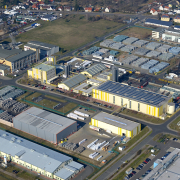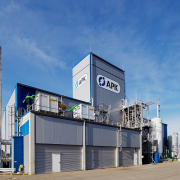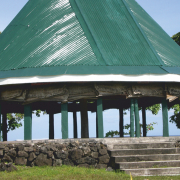Ghost Nets: What Happens to the Spirits the Fishery Invoked?
The number of abandoned, lost or otherwise discarded fishing gear (ALDFG) left in the oceans is unknown. The most mentioned figure is 640.000 tons each year, deriving from a joint report by FAO (United Nations Food and Agriculture Organisation) and UNEP (United Nations Environment Programme). Other estimations indicate that 46 to 70 percent of microplastic by weight are fishing gear or announce that 25,000 lost nets with a total length of 1,250 kilometers float in the
European water‘s seas.
However, it is much more important to know who is trying to reduce the maritime and coastal waste and what is ultimately happening to the collected material.
GGGI – the leading platform
The Global Ghost Gear Initiative (GGGI) calls itself “the recognized leading platform for addressing abandoned, lost and discarded fishing gear globally”. In its 2018 annual report, the platform refers to 95 participants representing a wide range of stakeholder categories including the fishing industry, corporates, NGOs, academia, intergovernmental and private sector organizations; additional 14 governments – from the United Kingdom and Canada to the Republic of Vanuatu and Tuvalu – belong to the signatories. The report shows GGGI activities like building evidence working groups, defining best practices, informing policy working groups and creating catalyze and replicate solutions working groups.
At that time the initiative, amongst others, coordinated a project with the Indonesian Centre for Fisheries Research and another with the Kingdom of Belgium and the World Animal Protection, organized net recycling in Dutch Harbor, Alaska, held a workshop including delegates of the Aquatic Resources Authority of Panama and the NOAA Marine Debris Program, started a Zero Impact Campaign in Chile and began to create a circular economy from abandoned, lost and otherwise discarded fishing gear (ALDFG) in Peru.
Investment mobilized
In 2017, GGGI supported the mobilization of 524.6 million US-Dollar in investment, a record that significantly exceeded the year’s target of 64 million US-Dollar. Of this amount, 337 million US-Dollar of investment in Ethiopia, 60 million US-Dollar of investment in Rwanda, and 15 million US-Dollar of investment in Indonesia were mobilized from the private sector. The UK Government was said to commit over 130,000 US-Dollar for work in Vanuatu and the Solomon Islands and to provide training on best practice management of fishing gear in other Commonwealth countries. The Government of the Netherlands wanted to commit 110,000 US-Dollar towards continued project work in Indonesia.
The report provided some net fishing quota too: 80 end-of-life nets from Alaska yielded 124 tons in 2017 and 71 tons in 2018. The expanded Bureo’s Net+Positiva program in Chile was expected to result in 100 tons of end-of-life fishing nets recycled and be turned into skateboards, sunglasses and frisbees. And in Peru, NetPlus producer Bureo even targeted a collection of more than 1,000 tons of ghost gear – including nets – annually.
Healthy Seas – the removal network
The activity radius of the Healthy Seas initiative is smaller, as the organization focuses upon three European regions: North Sea (the Netherlands and Belgium), Adriatic Sea (Italy, Slovenia and Croatia) and Mediterranean (Spain). In 2013, the organization was founded by Nylon producer Aquafil Group, StarSock and Ghost Fishing, building an international and local network active in lost fishing gear removal.
The cooperation of a non-governmental organization and businesses shares cleaning the seas of marine litter, mainly derelict fishing nets, as a common mission. It is backed by twelve associate member partners, four associate donor partners (including NoFir) and 65 other partners (including GGGI). And it is working with two harbors in the Netherlands, three harbors in Italy and 22 fishing communities in Greece. The recovery results published by Healthy Seas show a total of 453 tons collected between 2013 and 2018. The work was done by 75 volunteer divers and by operation of 650 fishing boats.
EUfir and NoFir – collecting and recycling
In terms of fishing gear collection, the balance of EUfir, respectively NoFir, offers slightly higher results. Between 2011 and 2019, the scheme assembled a total of 41,634 tons of material from 17 mostly European countries; in 2019 there were 3,151 tons from 10 countries. EUfir is the short form of “A European system for collecting and recycling discarded equipment from the fishing and fish farming industry”, sponsored by the European Commission within the Eco-Innovation funding initiative, starting in 2012 and funded by 680,000 Euro. Norsk Fiskeriretur AS (NoFir) was founded in 2008 to establish a nationwide system for collecting discarded equipment in Norway.
Since 2012, it is the coordinator of the EUfir project with the task of organizing the transport of collected and recovered equipment. According to a life cycle assessment study conducted by Italian Life Cycle Engineering, EUfir is a real network comprising transport means, a fishnet dismantling and materials classification facility run by UAB NoFir in Lithuania, and – besides a nets reuse service – specific recycling plants for PA6, PE and PP, lead and steel. The material is first dismantled and divided into homogenous types at Nofir UAB factory and then addressed or delivered to reuse or recycling processes at Nofir partners’ facilities.
The resulting functional unit is “1 kg of average EUfir system output material” composed of 76 percent PA6, 13 percent Polypropylene, nine percent HDPE, two percent lead and one percent steel. The system is rated for an output of 22 percent waste stocked for later treatment, two percent for reuse and 76 percent recycling. If the waste is managed without the EUfir system, only 20 percent is recycled, whereas 35 percent is dumped at sea and 45 percent disposed of.
Net-Works – the cross-segment initiative
Net-Works is another European cooperation founded by global carpet tile manufacturer Interface, Inc. and the Zoological Society of London (ZSL). The cross-segment initiative was originated to tackle the problem of discarded fishing nets in some of the world’s poorest coastal communities. The program started at the Danajon Bank in the Philippines in 2012, was expanded to the Douala-Edea region in Cameroon in 2015, and activities in Indonesia were projected. As a whole, 40 local communities were involved, a community-based supply chain for discarded fishing nets established and “the potential to provide a continuous and steady stream of used nets into the global supply chain” discovered. Besides that, the initiative collected 224 metric tons of waste fishing nets since 2012. Interface summarized: “Net-Works focused on working with coastal villages to recover fishing nets and incorporate them into our supply chain, to see them made into recycled nylon for our products.”
Via the program of Net-Works – meanwhile trademarked –, Interface became a founding member of the NextWave Initiative delivering “environmental and social benefit through the creation of the first global network of ocean-bound plastic supply chains”.
Aquavil – the Econyl yarn producer
The biggest beneficiary of most discarded or ghost net recovery activities is Polyamide producer Aquafil, headquartered at Arco in the Italian province Trentino. Its registered Econyl regeneration system enables Aquafil to use 100 percent regenerated raw materials obtained from post-consumer waste made from Polyamide 6 including fishing nets, fluff and rigid textiles as well as pre-consumer waste, generated from the production of Nylon 6. And to produce Nylon 6 Econyl yarn from it. That is why Aquavil is co-founder of the Healthy Seas project and has been working with an ECNC group to harvest those discarded nets. The company is a purchaser of the material Interface receives from the Net-Works collections. NoFir works in partnership with the Aquafil plant in Slovenia to turn the recycled nets into regenerated polymers.
The net recycling program at the Steveston Harbour on the west coast of British Columbia was formulated together with the Aquafil Group. And the Aquafil sustainability report 2011 offers that waste – admittedly not only won from the sea – was collected world-wide in the United States, British Columbia, Greece, Turkey, Pakistan, Egypt, Thailand and Norway. The globally assembled nets are inspected, cleaned and prepared at Ajdovscina, samples may be taken so that the material can be analyzed in more detail at the chemical lab in Ljubljana, and the material is ready to end in Aquafil’s Econyl regeneration plant in Ljubljana. (Along with these sources, Aquafil has a worldwide program that collects carpet fluff and fabrics – 30,000 tons worth between 2011 and 2013. Moreover, the company maintains a partnership with carpet producer Tarkett, with Aquafil sourcing post-use PA6 yarn from Tarkett to create its regenerated Econyl yarn to be used by Tarkett for new carpet tiles – a full circle).
Only two companies
Additionally, the group’s financial report in 2018 provides patents dated March 2013 on the recycling of polyamide fibers from elastomeric products, dated June 2017 on the composition of fishing net coatings and dated June 2018 a method to recover copper from discarded fishnets. There is only one serious competitor to Aquafil in the field of recycling fishing nets to yarn on a large scale: The Danish cleantech recycling company Plastix is specialized in converting fibers, primarily used fishnets, trawls and ropes into high-grade and virgin-like Green Plastic raw materials. Plastix uses a market gap, as Aquafil only recycles and ships the Nylon 6 material, while fishing gear such as trawl nets and crab pots can partly not be recycled. Sourcing primarily fiber plastics from an increasing number of ports, net makers, and plastics collectors globally, the finally pelleted recyclate is called OceanIX HDPE. “Today, five years after, we have solved the challenge and developed a mechanical recycling plant with the capacity of 20,000 tons annually for the treatment of waste fishing nets, trawls and rigid plastics, built an advanced laboratory for quality assurance and documentation and developed an extensive input collection system”, Plastix CEO Hans Axel Kristensen gave account.
It is not correct that – as an online-magazine wrote in 2017 – gear recycling in the fishing industry is “finally catching on”; the impulses came mostly from outside. It is not correct that – as another online-magazine titled at the same time – recycling fishing gear is “a net positive for startups and oceans”; the consolidation is already progressing. And it is not correct that – what both articles balanced – “fishing gear recycling is still in its infancy”: Collection, recycling and use of secondary raw materials are well known and utilized. However, higher quantities and more investment in collection and treatment are necessary since an annual amount of 640,000 tons are waiting out in the seas.
(GR12020, Page 42, Photo: Ria Algra / Pixabay)







